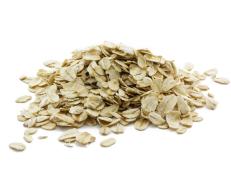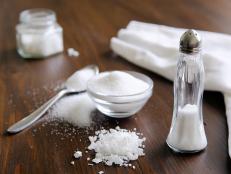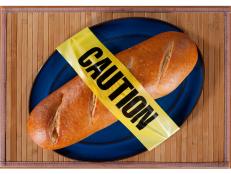9 Nutrients You're Not Getting Enough Of

Try as you might to eat healthy, chances are you’re falling short on at least one of these key nutrients: vitamin A, vitamin D, vitamin E, folate, vitamin C, calcium, magnesium, potassium and fiber. On average, Americans don’t get enough of these so-called shortfall nutrients, according to the Scientific Report of the 2015 Dietary Guidelines Advisory Committee.
How much do you need? How do you get more? Hint: Eating a lot more fruits, vegetables and minimally processed whole foods will get you there.
Vitamin A
Why you need it: Vitamin A is a fat-soluble vitamin that’s important for cell growth and function. It’s also important for your immune system and vision.
How much you need daily: 900 mcg (men); 700 mcg (women)
How to get it: Vitamin A is available in dairy, fish and meat (especially liver). You can get carotenoids — the nutrients that make vitamin A — through fruits and vegetables. They’re particularly abundant in dark leafy greens (like spinach and broccoli) and vibrant orange-colored fruits and vegetables (sweet potatoes, cantaloupe, mango and more).
Vitamin D
Why you need it: Vitamin D helps your body build strong bones by regulating the balance of calcium and phosphorous. Deficiency has been linked to a variety of diseases, including Type 2 diabetes, IBS, depression and heart disease.
How much you need daily: 600 IUs (men and women); 800 IUs (adults over 70)
How to get it: We actually get most of our vitamin D from sunlight (UVB rays stimulate your skin to make previtamin D-3). But if you live above the Mason-Dixon Line, chances are your body’s short on natural vitamin D during winter months, when there’s not enough UVB to produce D. (You might also risk deficiency if you don’t have much sun exposure — due to clothing, sunscreen or air pollution.) Food sources of D include oily fish (such as salmon and mackerel), dairy products, egg yolks and fortified cereal.
Calcium
Why you need it: A healthy skeleton is the driving reason to get enough calcium in your diet.
How much you need: 1,000 mg (men and women); 1,200 mg (adults over 70)
How to get it: Yogurt (regular plain yogurt has more calcium than Greek yogurt), calcium-set tofu, beans, bok choy, milk and fortified nondairy milks are your friends here.
Photos
See All Photos
Joern Rynio, Joern Rynio
Vitamin E
Why you need it: Vitamin E describes antioxidants that protect fats in your body (including LDL, the “bad” cholesterol) from oxidizing.
How much you need daily: 15 mg (men and women)
How to get it: Plant oils (particularly sunflower and safflower), nuts and avocado are good ways to get this fat-soluble vitamin.
Magnesium
Why you need it: Magnesium does many jobs in your body. It’s needed to extract energy from food, to keep bones and cells healthy, and to create DNA, RNA and proteins.
How much you need: 400 mg (men 19 to 30); 420 mg (men 31 and older); 310 mg (women 19 to 30); 320 mg (women 31 and older)
How to get it: Leafy greens, nuts and whole grains are some of the best sources of magnesium.

Deyan Georgiev, Deyan Georgiev
Vitamin C
Why you need it: Vitamin C is important for healthy skin and immune function.
How much you need daily: 90 mg (men); 75 mg (women)
How to get it: Citrus fruit, kiwis, strawberries, red bell pepper, broccoli and white potatoes all have good amounts of vitamin C.
Potassium
Why you need it: Potassium is an electrolyte — it helps your heart to beat! It’s also important for strong bones.
How much you need daily: 4,700 mg (men and women)
How to get it: Fruits, vegetables and low-fat dairy are the best ways to get potassium. Since you need a lot of potassium, get a wide variety of whole foods in your diet. One baked potato has 926 mg, a banana has 422 mg and a cup of milk has 366 mg.

Janine Lamontagne
Folate
Why you need it: Folate, also called B-9, helps create DNA and metabolize amino acids, which are your body’s “building blocks.”
How much you need daily: 400 mcg (men and women)
How to get it: Green leafy vegetables, citrus fruit and legumes (lentils and beans) are all great ways to get folate. Fortified cereals and flours can also add to your folate intake.
Fiber
Why you need it: We could sing the praises of fiber forever, but let’s just touch on some highlights: It helps lower your LDL “bad” cholesterol, it keeps you “regular,” and it helps regulate your blood sugar.
How much you need daily: 14 g/1,000 kcal
How to get it: Beans are brimming with fiber, as are whole-grain cereals, fruits, vegetables and nuts. Fiber is found in plant-based foods — generally the less processed an ingredient, the more fiber is left intact.
Photos
See All Photos*Note: Recommended amounts are based on the recommended dietary allowances and adequate intakes for adult men and women.
Kerri-Ann is a registered dietitian who writes on food and health trends. Find more of her work at kerriannjennings.com or follow her on Twitter @kerriannrd or Facebook.



































